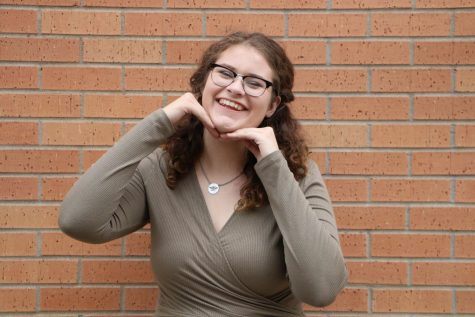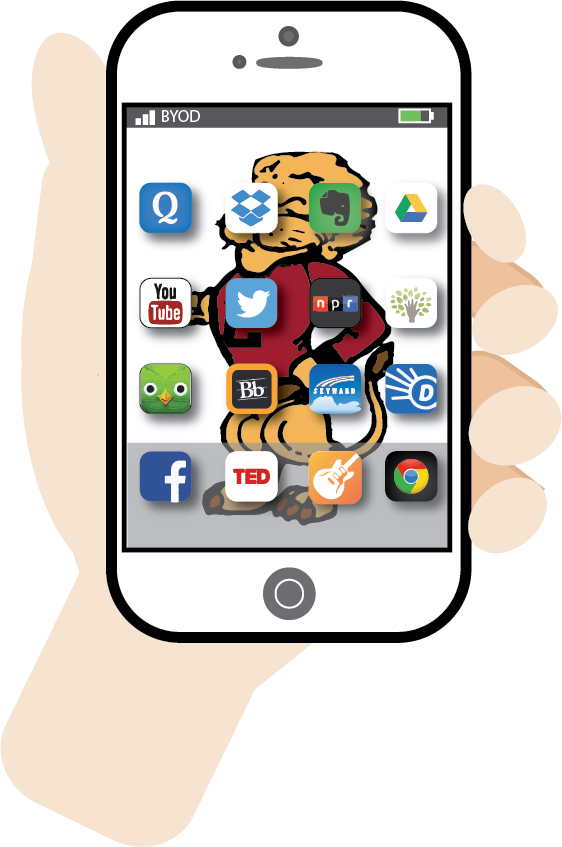Getting the right blend
Blended classrooms hand students options for learning
More stories from Jaycee Mountain
Walking down the hall it’s inevitable to see students on their phones. Since keeping students away from their phones doesn’t seem like a possibility, why not use phones as resources in the classroom?
This school year, with the introduction of BYOD, classrooms are able to incorporate student-provided technology to teach lessons in a variety of ways, supplementing a process known as blended learning.
Blended learning is not easy to define, but for students who have a blended class, they can say it is different from a traditional class.
In a traditional classroom, a typical day might consist of the teacher lecturing in front of the class. Teachers may provide notes on PowerPoints or handouts.
To some teachers, this process can be tiring, and blended is a way to fix that.
In a blended classroom, there is more than one way to teach lessons, including online lectures or online activities. Websites, such as Khan Academy, Quizlet and Blackboard, are just a few of the tools teachers use to share lessons and notes with students.
These websites make it easier for teachers to change their classroom into what is called a flipped classroom.
“A blended classroom is what the teacher makes it. I specifically flip my classroom,” math teacher Brooke Kissinger said. “So students watch a video lecture at home that I make, and then in class, we do all the different activities that I will have in my classroom and homework stuff out of the book in class. That way, we don’t waste time with me telling them the information.
They can listen to the information, and they come to class already prepared.”
The BYOD network benefits blended learning classrooms, because teachers are able to put lessons, notes and other classroom activities online where students are able to access them on their phones, tablets or computers.
“I have online lessons and online activities all the time,” Kissinger said. “So basically, if students bring iPads and iPhones and laptops, they can use them, whereas before we didn’t have wifi for them to use.”
The only problem is, not all students have smart phones or computers at home. One issue blended learning teachers face is how to accommodate students who don’t have access to devices.
“If students don’t have the technology at home, then they can do kind of everything here or there’s other opportunities in Lawrence,” physics teacher Alan Gleue said. “They can go to our library here. Most kids will have a platform, maybe at home… cellphone or something like that they can do at least some of the work on. But if they don’t have anything, then there’re other ways to attack the problem or approach the problem.”
In blended classrooms, new devices are provided, including MacBooks and iPads for students to use. Students may bring in electronics from home to use in class as well.
The difference between a traditional classroom and a blended class is that most of the work is online.
“So we do all of our homework online, but we do a whole bunch of labs and activities in class,” junior Laura Berghout said.
In blended learning classrooms, students find they can move at their own pace.
“One of the benefits is that now they are taking control of their own learning.” Kissinger said. “They come in, they know what to do, they know what they are expected to do, and they come in and get stuff done. Whereas before, I was leading them. They could come in and wait for instructions, and I would tell them what to do, and then they would wait for more instructions.”

Hi, I'm Allie Fischer, I am the Editor-in-Chief of the Red & Black Yearbook. This is my 3rd year on staff and 2nd year being EIC. I have an unhealthy...



